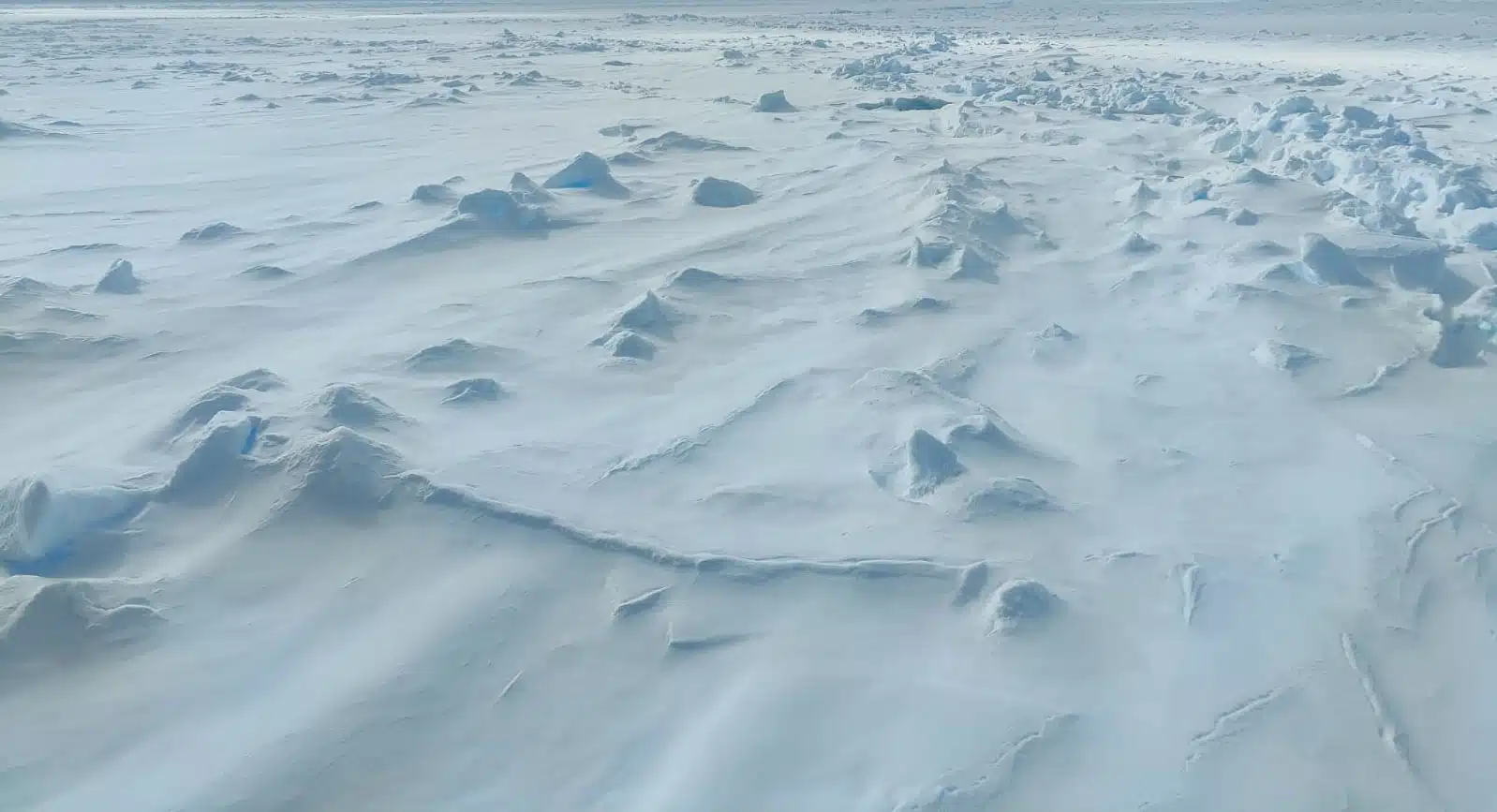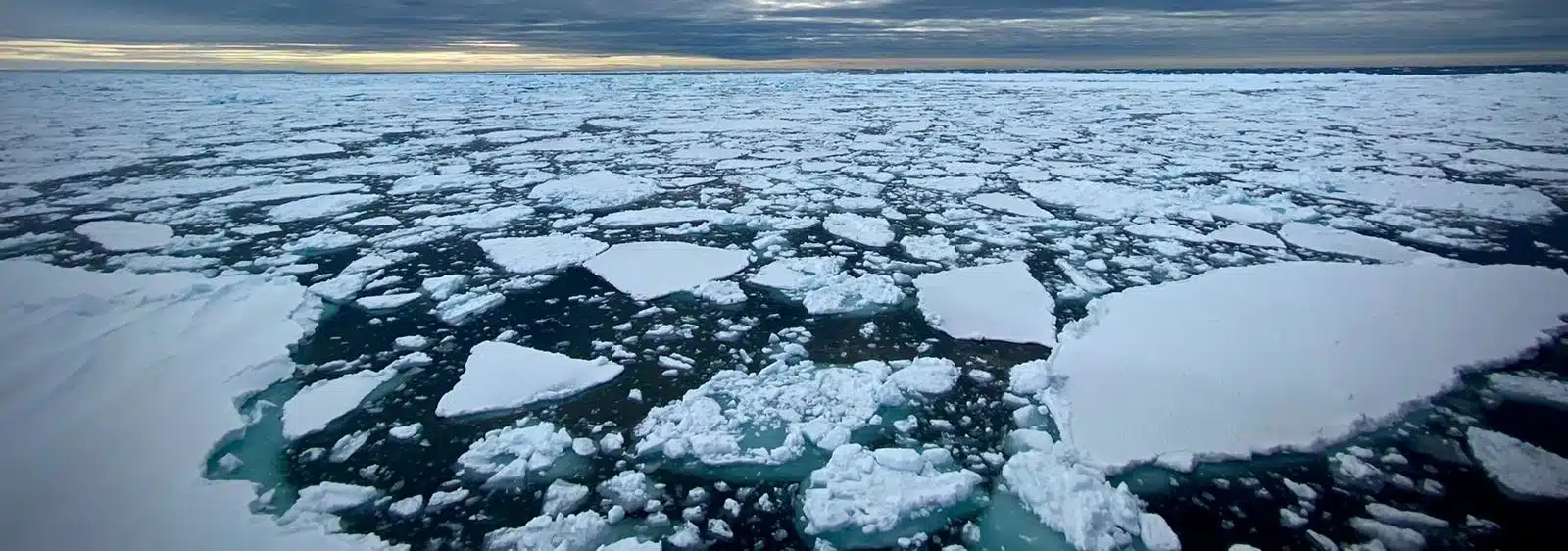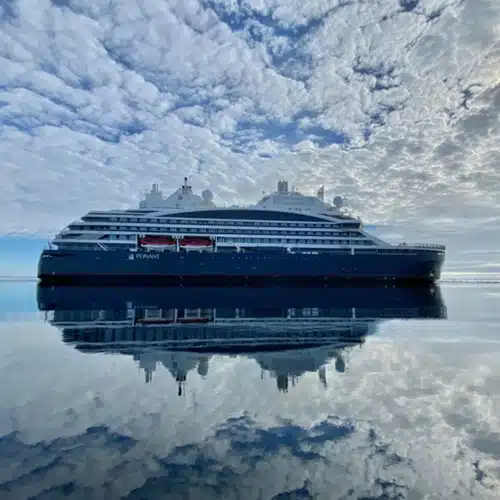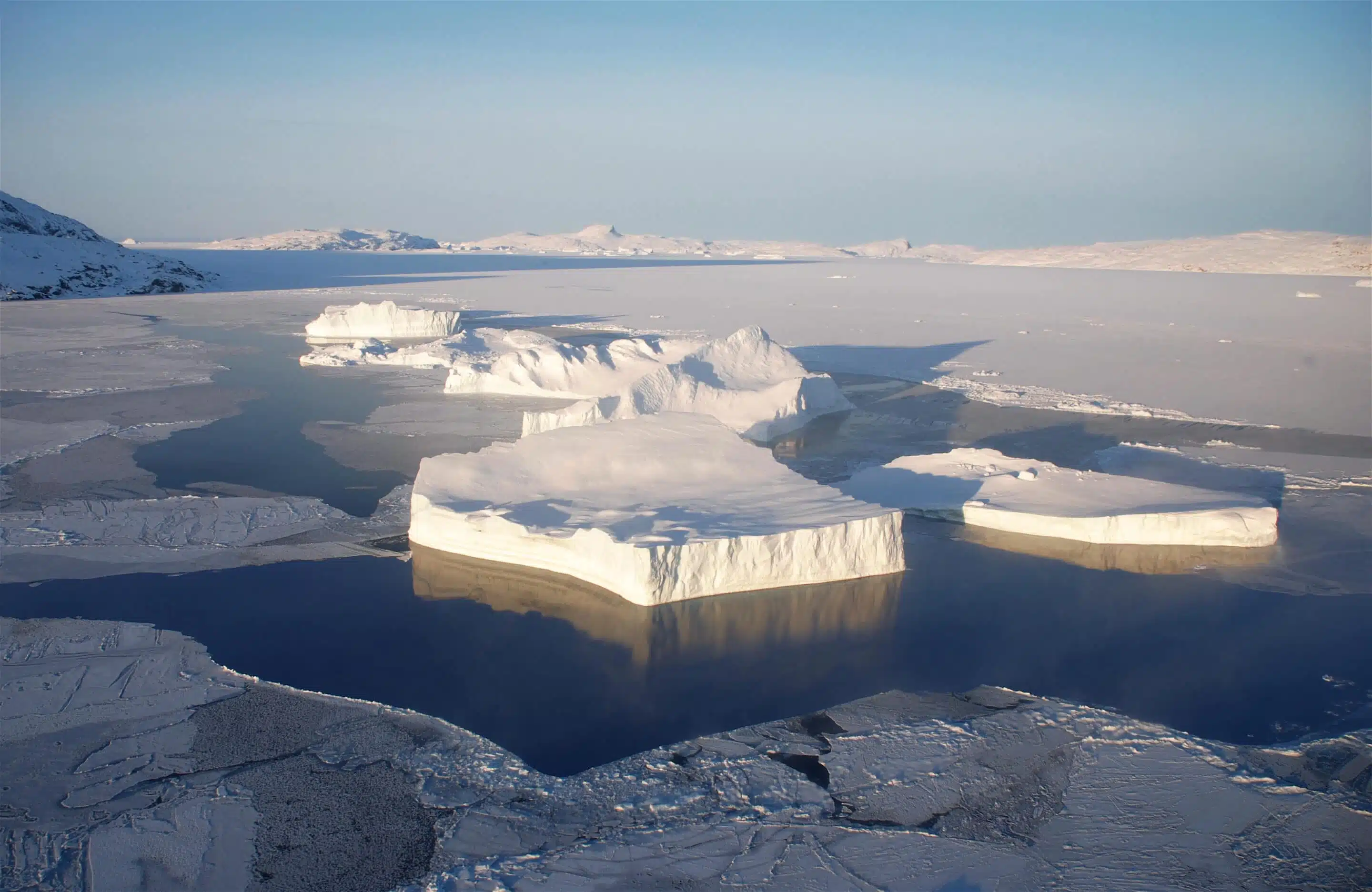Trial run through the ice for Le Commandant Charcot
Following the success of both its Norwegian sea trials in April 2021 and the tests of its liquefied natural gas propulsion system – a completely innovative new approach –Le Commandant Charcot, the first ever hybrid-electric polar exploration ship, really stepped into the thick of things by heading for northeast Greenland, less than 1,000 kilometres from the North Pole, to undergo initial trials of its all-round capabilities and performance in the ice.
In addition to the PONANT teams, each of the partner organisations that worked on the construction of Le Commandant Charcot were also on board the ship, from Norwegian shipyard VARD SOVIK to Finnish engineering firm AKER ARCTIC, which designed the hull, and VIKING, which was responsible for organising these ice trials, which for everyone involved constituted a watershed inaugural moment: the outcome of six years’ work.
Destination Belgica Bank!
In the early hours of June 11, the hull of Le Commandant Charcot came into gentle contact with its very first ice. Having departed Tomrefjord in Norway for Spitsbergen, passing via Longyearbyen along the way, the ship is now headed for Belgica Bank off the coast of northeast Greenland. It’s here – after conducting a thorough survey of the area – that Le Commandant-Charcot will find ice of the best density: hard first-year ice, not too thick and not too thin, and not affected by much movement. It’s about finding “a site covered by a large area of a type of coastal sea ice known as fast ice,” explains New Builds and Research & Development Director Mathieu Petiteau. “This kind of ice has a fairly uniform surface, free from too many compression zones”.

Full-scale tests to navigate safely in the ice
The handful of ice floes1 traversed on route to Belgica Bank gave the crew of Le Commandant Charcot a glimpse of the ship’s formidable capabilities. First impressions are extremely positive. With the ship already drawing admiration from the experienced captains for the way she manoeuvres, combining power with agility: “This crossing has enabled us to fine-tune the propulsion system under full power before we get the actual ice performance trials underway,” explains Matthieu Petiteau. The morning of June 15, it’s D-day. “Using bathymetric surveys, we’ve been able to identify an area of deep water where we can carry out our trials in safety without entering Greenland’s territorial waters.”
To begin with, Le Commandant Charcot first undergoes a series of speed tests through ice ranging from 2 to 2.7 metres (6½ to 9 feet) in thickness, and through ridges2 measuring almost 10 metres (33 feet). The result: power far in excess of the standards required, thus ensuring maximum levels of safety. Afterwards, once disembarked on the sea ice in complete safety, the AKER ARCTIC teams spend time collecting ice core samples so they can precisely analyse them in terms of thickness, salinity, temperature and hardness. It also provides an opportunity to test out the ICE CUBES: innovative camp kits that enable “the entire crew and passengers to survive on their own for several days in an extreme environment,” explains Captain Marchesseau. “We are ready and prepared for anything!”.

On June 18, the ship departs Belgica Bank to head north in search of a larger area of sea ice. “Included in the programme,” recalls Matthieu Petiteau “were reversing tests, passages through 15-metre deep and 3-metre high ridges – without doubt the most impressive thing we’ve done – and to finish with, SRTP tests.” Safe Return to Port is the number one safety requirement: Le Commandant Charcot has two of everything – fire extinction systems, command bridges, engine rooms, etc. – to enable it to cope with all kinds of situations. It’s an emotion-filled day… and one crowned with success!
Vibration levels were also measured throughout the trials to ensure the ship meets passenger comfort standards on board. “I was blown away by how comfortable it felt on board. You could easily have believed you were out on the open sea. “She’s very well-mannered,” adds Captain Marchesseau. With its 10-metre draft, its anti-roll stabilisers (used in open waters) and its ice-breaking hull specially designed by Aker Arctic to meet the standards of a cruise ship, Le Commandant Charcot is particularly stable, and she’s also the first ship with an ice-breaker-type reinforced hull and the first ship equipped with integrated stabilisers.
On June 21, the crew decides to head to the north of Spitsbergen for an endurance test in colder, harder ice. Once the test is completed, PONANT’s captains and officers take over at the controls to carry out a series of manoeuvring tests in the ice. “We learned a lot about ice navigation from the four Swedish and Norwegian Aker Arctic captains on board,” explains Patrick Marchesseau.
The art of sustainable sailing in the polar regions
Along with the North Pole, northeast Greenland remains one of the least known and least visited area of the polar regions. A at the beginning of the 20th century, there was the expedition led by the Duke of Orleans and the Belgian captain Adrien de Gerlache de Gomery on board La Belgica! On the whole, however, “Very few ships have ventured to this part of the world,” observes Captain Stanislas Devorsine. For him personally, and for captains Étienne Garcia and Patrick Marchesseau, it’s a dream come true… and a privilege.
It’s the privilege of discovering and exploring a region of incredible biological richness, notable, in particular, for its polynyas: stretches of open water surrounded by sea ice and which serve as marine oases for an entire ecosystem as precious as it is fragile.
Disturbing these incredible places replete with life is of course out of the question for Le Commandant Charcot. The crew therefore adopts an extremely vigilant and careful approach when marvelling (from a distance) at the sight of Greenland’s bears, walruses, bearded and ringed seals, narwhals and right whales. “The extraordinary power of the ship is there only as a backup to ensure everybody’s safety. To avoid weakening the ecosystem, which is vital for both wildlife and the Inuit populations in the Arctic, we will never sail at full power or enter areas of fast ice,” explains Captain Marchesseau. “We will sail in the open channels between the broken up sheets of drifting sea ice.” “Our electric batteries will enable us to sail in zero-emission mode. We will adopt an approach of complete humility in coping with the elements, and we will be as discreet as possible to give nature the opportunity to surprise us,” adds Captain Garcia. As was the case with an encounter with a curious bear and her cub, who came to greet the bow of Le Commandant Charcot, or the sighting of another bear close to the ship making its way between the ice sheets, indifferent to the vessel’s presence.
The Adrena ice routing software designed especially for Le Commandant Charcot will play an essential role in working out the best possible route and minimising the impact the ship has on the environment.
Then there’s the further privilege of coming to cruise off the coasts of these isolated lands, settled a thousand years ago by the descendants of the first men to arrive from Russia via Beringia, an Ice Age land bridge between eastern Siberia and Alaska which later became the Bering Strait. Remnants of this Thule civilisation, the ancestors of all today’s Canadian Inuits, still exist today in northern and northeastern Greenland.
Science and awareness
As a robust polar expedition ship capable of navigating through the ice and disembarking its passengers in complete safety, it is strongly hoped that Le Commandant Charcot, with its onboard research laboratories, will go on to make its mark on the history of scientific exploration. These ice trials have provided an opportunity “to lay the initial groundwork for the collaboration between PONANT and academic research,” explains New Builds Site Manager Vladislav Sidorenkov-Duprez. “Because Le Commandant Charcot has the Sea-Ice Measuring System (SIMS) installed, we were able to measure the thickness of the ice to an accuracy of 10 cm (4 inches) over the course of the entire journey. The resulting surveys will be made available to the scientific community via an open access database.”
Furthermore, and in collaboration with the Laboratoire d’Océanographie et du Climat at LOCEAN-Sorbonne Pierre et Marie Curie University,“We have installed a stereoscopic camera able to film blocks of ice all around the ship in 3D so that their geometry can be studied,” he explains.
A worthy enterprise then, this alliance between scientists and polar navigation experts on board Le Commandant Charcot, which from the outset has been designed as a ship of scientific opportunity. Once the procedures involved have been tested and approved, future passengers of Le Commandant Charcot will be able to take part via “participatory science” sessions. This is a unique opportunity to raise awareness of essential questions around how the atmosphere and the oceans interact and the fundamental role played by the cryosphere3. “There are no French research vessels with this kind of ice-going capacity. This is a unique opportunity to further our knowledge of ice and polar environments,” concludes Captain Marchesseau.
What was the outcome of these ice trials? An across-the-board success hailed by all the teams involved, who are now eager to take to the sea so they can share their enthusiasm with others. Next step, the dry run…training expedition leaders in ice reconnaissance with two Inuit hunters on board!
(2) Compression ridge.
(3) The Earth’s entire ice compartment, consisting of mountain glaciers, sea ice and the large ice caps of Antarctica and Greenland.




